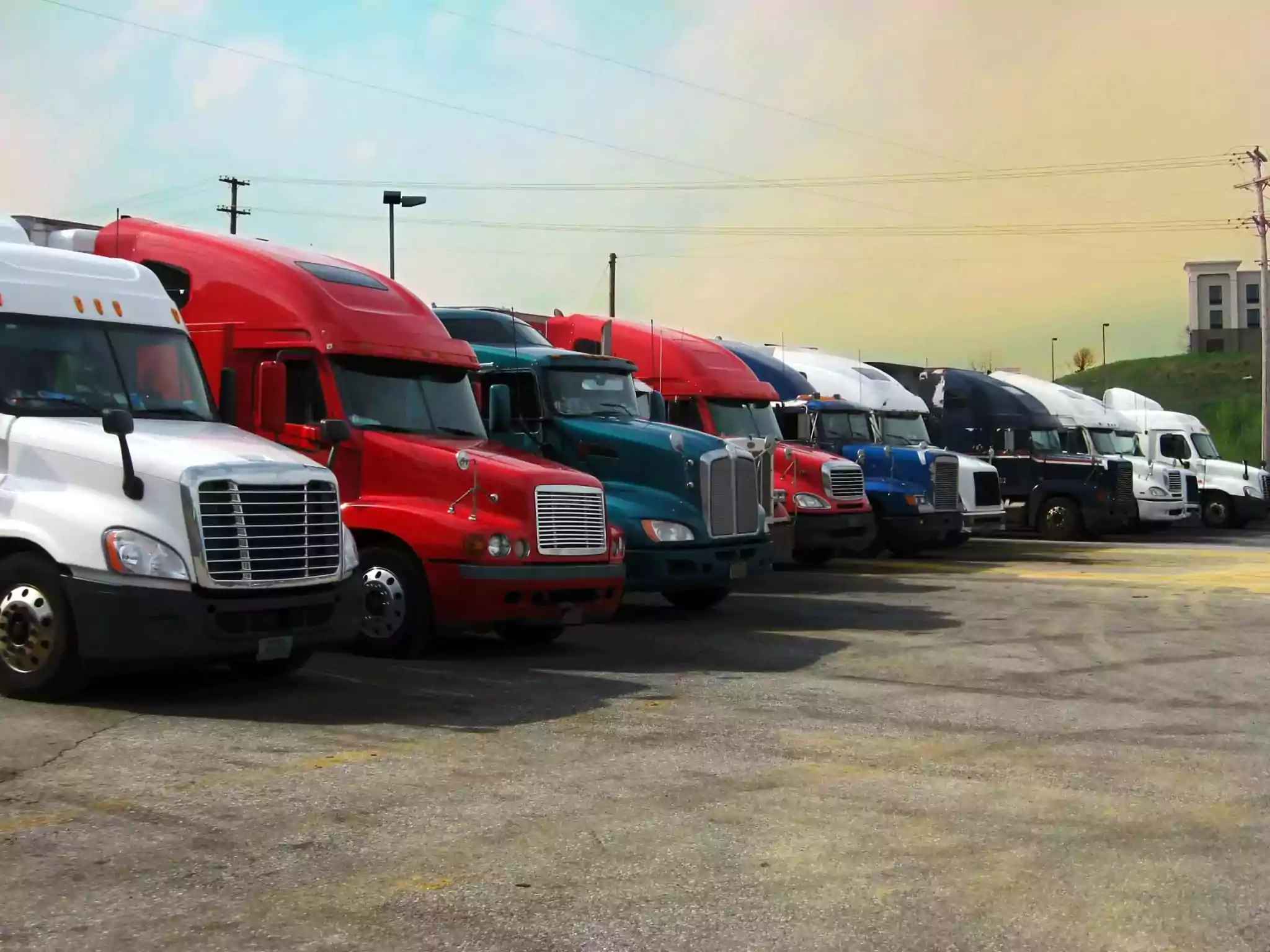ELD for Trucks: Ensuring Compliance and Efficiency on the Road

Driving a truck is no easy task. It requires immense skill, endless hours on the road, and a dogged determination to meet deadlines. But in recent years, there has been a revolutionary tool that has transformed the trucking industry – Electronic Logging Devices (ELDs). These devices have not only ensured compliance with regulations but also enhanced efficiency on the road. In this article, we will explore the importance of ELD for trucks, understand the basics of these devices, guide you through the transition process, and analyze the impact they have had on the trucking industry.
Understanding the Importance of ELD for Trucks
When it comes to compliance, Electronic Logging Devices (ELDs) play a pivotal role. These devices help trucking companies adhere to Hours of Service (HOS) regulations, ensuring that drivers get the rest they need to operate safely. By accurately recording their driving time, ELDs eliminate the need for manual logs, reducing the chances of errors and falsification. This not only keeps drivers and companies in line with the law but also promotes accountability and fair competition within the industry.
But compliance is not the only benefit of ELDs. These devices have revolutionized the way truckers operate, making their lives more efficient and hassle-free.
The Role of ELD in Compliance
ELDs track and record crucial data like driving time, breaks, and rest periods, automatically generating accurate logs for drivers and their companies. This helps them avoid violations and ensures that they are always compliant with HOS regulations. The ease and accuracy of ELDs have taken the guesswork out of HOS compliance, allowing drivers to focus on their core task of getting goods from point A to point B.
Furthermore, ELDs provide additional features that enhance compliance. They can alert drivers when they are approaching their maximum driving time, preventing unintentional violations. Some ELDs even have integrated GPS systems that automatically update the driver’s location, ensuring accurate recording of driving time based on the specific jurisdiction’s regulations. By streamlining the compliance process, ELDs not only save time but also reduce the risk of penalties and fines.
How ELD Enhances Efficiency on the Road
ELDs go beyond just compliance; they also bring a range of efficiency benefits to truckers. By automating the log-keeping process, truckers save precious time and eliminate the need for tedious paperwork. This means less time spent on administrative tasks and more time on the road, ensuring faster deliveries and increased productivity.
Moreover, ELDs provide real-time tracking and monitoring of a truck’s location and status. This data allows dispatchers and fleet managers to efficiently schedule routes, optimize fuel consumption, and reduce idle time. With this information at their fingertips, truckers can avoid traffic congestion, plan for rest stops, and make necessary adjustments to maximize efficiency on their journeys.
Additionally, ELDs can provide valuable insights into driver behavior and performance. By analyzing data such as harsh braking, speeding, and idling, trucking companies can identify areas for improvement and implement targeted training programs. This not only helps improve safety on the road but also reduces maintenance costs and extends the lifespan of the vehicles.
In conclusion, ELDs have become an indispensable tool for the trucking industry. They ensure compliance with HOS regulations, promote fair competition, and enhance efficiency on the road. By embracing this technology, truckers and companies can streamline their operations, improve safety, and stay ahead in an ever-evolving industry.
The Basics of Electronic Logging Devices
Now that we understand the importance of ELDs, let’s dive into the key features and technology behind these devices.
Electronic Logging Devices (ELDs) have revolutionized the way truckers manage their daily operations. These devices not only ensure compliance with Hours of Service (HOS) regulations but also offer a range of features that enhance efficiency and safety on the road.
Key Features of ELDs
ELDs come with a variety of features designed to simplify the daily tasks of truckers. Apart from automatic logging, they often include features like GPS tracking, automated inspection reports, and real-time alerts. Some advanced ELDs even offer features like vehicle diagnostics and maintenance reminders, ensuring that trucks are in optimal condition for the long haul.
Moreover, ELDs provide valuable insights into driver behavior and performance, allowing fleet managers to identify areas for improvement and enhance overall operations. The integration of electronic signature capabilities also streamlines paperwork processes, reducing administrative burdens for drivers and companies alike.
The Technology Behind ELDs
ELDs rely on a combination of hardware and software to function. The hardware usually consists of a small device that connects to the vehicle’s engine, collecting data on driving time and other relevant information. This data is then transmitted to the ELD software, which displays and stores it securely. The software can be accessed through various devices, such as smartphones, tablets, or dedicated ELD monitors.
Furthermore, ELD technology continues to evolve, with advancements such as integration with telematics systems and cloud-based storage solutions becoming increasingly common. These developments not only enhance data accuracy and accessibility but also pave the way for future innovations in the realm of fleet management and logistics.
The Transition to ELD: A Step-by-Step Guide
Now that you’re familiar with the basics of ELDs, let’s talk about how you can smoothly transition from traditional paper logs to these innovative devices.
Electronic Logging Devices (ELDs) have revolutionized the way fleet management is conducted in the transportation industry. By automating the logging of drivers’ Hours of Service (HOS) and ensuring compliance with regulations, ELDs offer increased efficiency and accuracy in record-keeping.
Preparing Your Fleet for ELD
The first step is to ensure that your fleet is ready for the ELD transition. This involves reviewing your current processes, training your staff, and selecting the right ELD provider. It’s crucial to choose a reliable provider that offers comprehensive support and training to ensure a seamless transition.
Reviewing and updating your company’s policies and procedures to align with ELD requirements is essential. This may involve revising your driver handbook, updating safety protocols, and establishing new communication channels for ELD-related issues.
Training Drivers on ELD Usage
Once you have selected an ELD provider, it’s important to train your drivers on how to use the devices effectively. Conduct informative sessions that cover topics like log management, device operation, and troubleshooting. It’s important to address any concerns or doubts they may have and highlight the benefits that ELDs bring to their daily operations.
Simulated training scenarios can be beneficial in helping drivers familiarize themselves with ELD functionalities in a controlled environment before they hit the road. Encouraging open communication and feedback during training sessions can also help identify any areas that may require additional support or clarification.
The Impact of ELD on the Trucking Industry
ELDs have had a profound impact on the trucking industry, transforming the way business is conducted and improving road safety.
With the implementation of Electronic Logging Devices (ELDs), the trucking industry has witnessed a significant shift towards enhanced efficiency and accountability. The digitalization of logging processes has revolutionized the tracking of drivers’ hours of service, leading to a more streamlined and accurate recording system. This technological advancement has not only simplified record-keeping but has also minimized the margin for error and manipulation that was prevalent with traditional paper logs.
ELD and Its Effect on Driver’s Hours of Service
Prior to ELDs, paper logs were prone to errors and falsification. With ELDs, accurate and tamper-proof logs have become the norm. This has significantly reduced violations and improved compliance with HOS regulations. As a result, drivers are now getting the rest they need, ensuring they are alert and focused on the road, ultimately improving safety for everyone.
The transition to ELDs has ushered in a new era of transparency and accountability within the trucking industry. By automatically recording driving hours and duty status, ELDs have empowered both drivers and fleet managers with real-time data that enables better decision-making and resource allocation. This increased visibility not only promotes adherence to regulations but also fosters a culture of responsibility and professionalism among drivers.
ELD’s Contribution to Road Safety
In addition to ensuring compliance, ELDs also contribute to road safety by providing critical data on the behavior and performance of truck drivers. This data helps identify patterns and areas for improvement, allowing companies to address risky driving behaviors and provide targeted training to their drivers. The result is safer roads and a reduction in accidents caused by fatigue or other violations.
Moreover, the integration of ELDs with telematics systems has further bolstered safety measures by enabling real-time monitoring of vehicle location, speed, and engine diagnostics. This interconnected network of data not only enhances fleet management capabilities but also facilitates proactive maintenance scheduling and route optimization. By harnessing the power of ELD technology in conjunction with advanced telematics solutions, trucking companies can proactively mitigate risks, enhance operational efficiency, and prioritize the well-being of their drivers and other road users.
Overcoming Common ELD Challenges
While ELDs have numerous benefits, they also come with their fair share of challenges. Let’s discuss some common challenges you may encounter and how to overcome them.
Addressing ELD Compliance Issues
With any new technology, there will inevitably be compliance issues that arise. It’s crucial to stay updated with the latest regulations and ensure that your ELD system is in line with the requirements. Regular audits and training sessions for your drivers can help address compliance issues proactively and avoid penalties.
Solutions for ELD Technical Problems
Technical glitches can occur with any electronic device, and ELDs are no exception. To minimize disruptions, it’s important to choose a reliable ELD provider that offers prompt customer support. Regular software updates and training sessions can also help drivers troubleshoot common technical problems and ensure uninterrupted operation of the devices.
As we reach the end of our journey through the world of ELDs, it’s clear that these devices have revolutionized the trucking industry. They have not only ensured compliance with regulations but also increased efficiency, improved road safety, and streamlined operations. So, if you’re still stuck in the era of pen and paper, it’s time to join the digital age and embrace ELDs.




